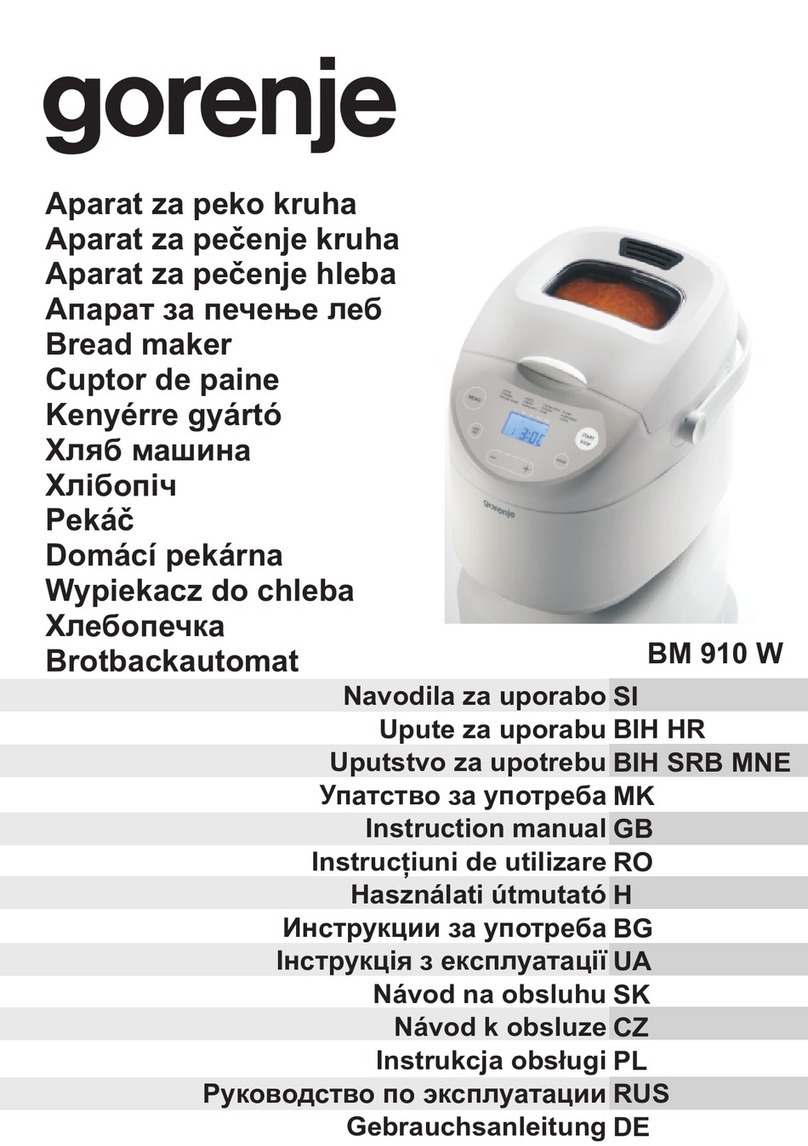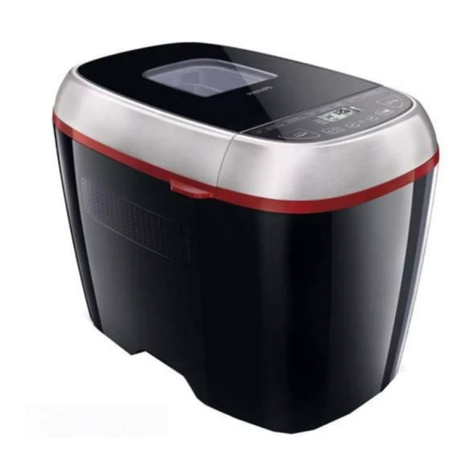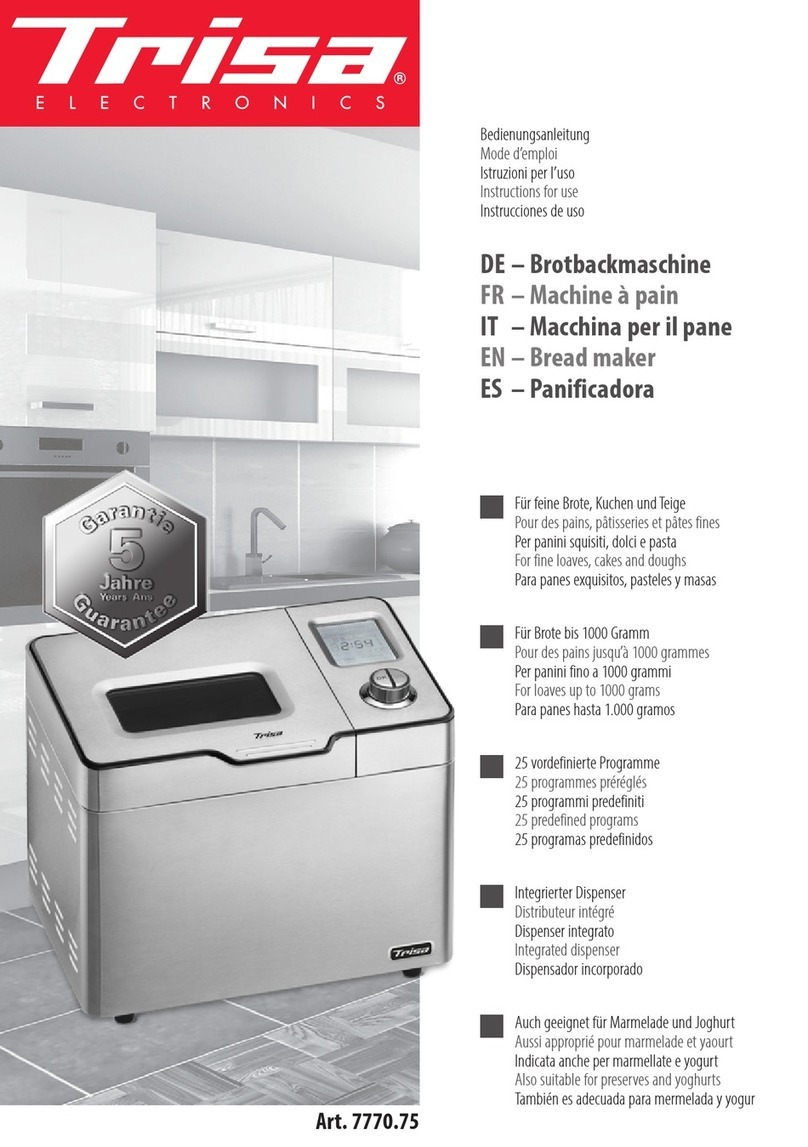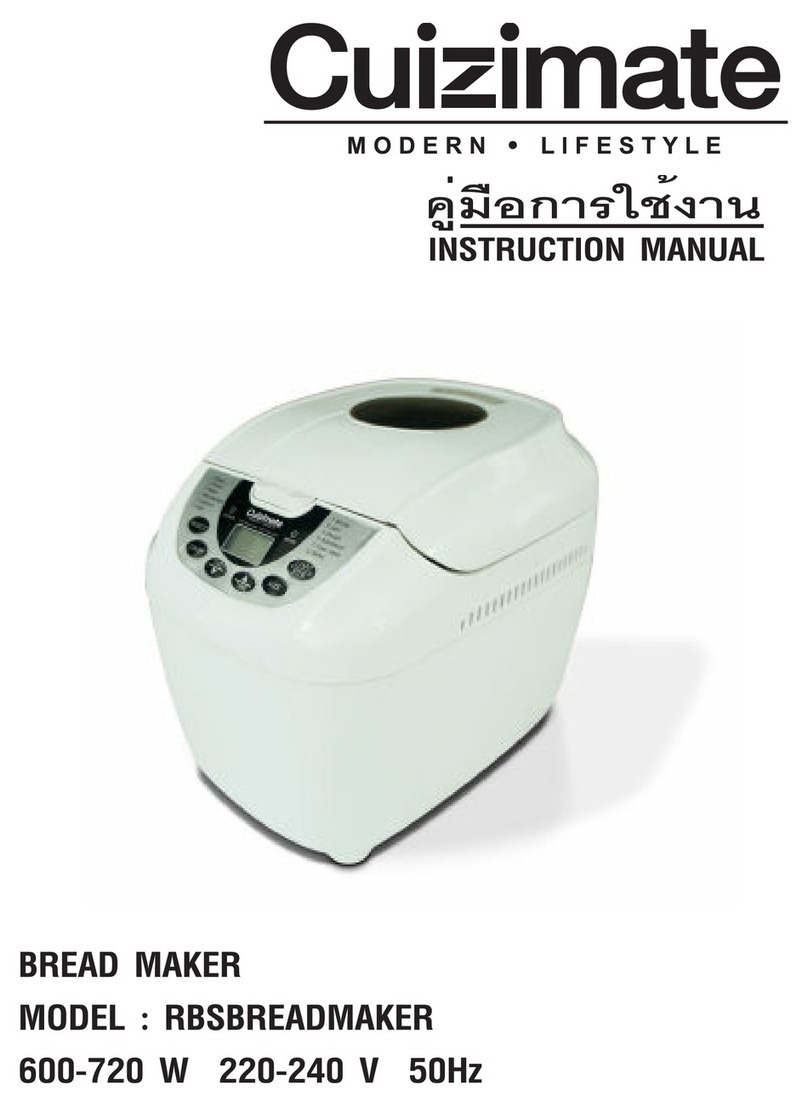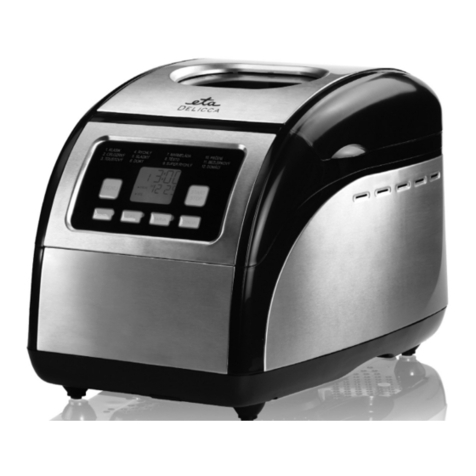GASER PRACTIC 350 User manual

AUTOMATIC BATTER - BREADING
MACHINE
Mod. PRACTIC 350

-2-
INDEX
1. INDUSTRIAS GASER............................................................................................4
2. EC DECLARATION OF CONFORMITY .................................................................5
3. HYGIENE CERTIFICATE.......................................................................................6
4. INTRODUCTION....................................................................................................7
4.1 Safety...............................................................................................................7
4.2 Hygiene............................................................................................................7
5. TECHNICAL SPECIFICATIONS.............................................................................8
6. RECEIPT AND START-UP.....................................................................................9
6.1 Receipt.............................................................................................................9
6.3 Start-up ..........................................................................................................11
6.3 Notes .............................................................................................................13
7. CLEANING...........................................................................................................14
8. MAINTENANCE...................................................................................................17
9. TROUBLESHOOTING .........................................................................................18
10. GENERAL DIAGRAM.........................................................................................19
10.1 Overview.....................................................................................................19
10.2 Overview complete breading belt drive shaft................................................24
10.2.1 Overview complete breading belt drive gears........................................25
10.3 Overview complete batter belt drive shaft.....................................................26
10.3.1 Overview batter belt drive gears............................................................27
10.5 Overview complete batter belt bearing housing............................................29
10.6 Overview complete breading belt passive rollers..........................................30
10.7 Overview complete breading belt tensioning shaft........................................31

-3-
10.8 Overview complete batter belt tensioning shaft ............................................32
10.9 Overview complete batter belt lower shaft....................................................33
10.10 Overview complete batter belt lowering assembly......................................34
10.11 Intermediate bearing housing overview ......................................................35
10.12. Complete PRACTIC 350 breader overview ...............................................36
10.13 Gear motor overview..................................................................................37
10.14 Control panel overview...............................................................................38
10.15 Electrical cabinet overview.........................................................................39
10.16 Upper turbine overview (optional accessory)..............................................41
12. WIRING DIAGRAMS..........................................................................................42

-4-
1. INDUSTRIAS GASER
Since its foundation in 1969, INDUSTRIAS GASER has specialised in manufacturing a range of
stainless-steel machinery for the meat industry.
Since 1985 we have constantly developed technology for GASER-brand hamburger-forming
machines, developing a distinctive system based on a SIMPLER, MORE EFFECTIVE AND MORE
ECONOMICAL TECHNIQUE.
In the 1990s, INDUSTRIAS GASER expanded into markets in various countries around the world, and
not just in the hamburger sector.
We are aware that our work would be of no value without the trust of our existing clients and partners
or the interest shown by those who wish to join them.
We thank them all.
INDUSTRIAS GASER GASER EUROPA
Salt, Girona, SPAIN L’viv, UKRAINE
INDUSTRIAS GASER Ctra, Bescanó, 15, Pol. Torre Mirona 17190 Salt (Girona) - Spain
Tel. 34 972 23 65 72 | Fax 34 972 23 63 66 | Whatsapp: (34) 679 49 65 06
email: gaser@gaser.com
GASER EUROPA вул.Б.Лепкого,1 81160 смт.Щирець Пустомитівский р-н Львівська область
Украіна - Ukraine
Tel. 38 (03230) 67251/84
Fax 38 (03230) 67191
email: gasereuropa@gaser.com
For more information about the company and its products: www.gaser.com

-5-
2. EC DECLARATION OF CONFORMITY
We declare under our responsibility that the following machine:
Brand: GASER
Model: PRACTIC-350
Serial no.
Year of construction:
is in conformity with the following regulations
UNE-EN ISO 12100:2012
UNE-EN ISO 14120:2016
UNE-EN ISO 14121-1:2008
UNE-EN 60204-1:2007 60204-1:2007 CORR. 2010 60204-1:2007/A1:2009
UNE-EN ISO 13849-1:2008/AC:2009
and is in conformity with the following directives
Machinery directive: 2006/42/CE
Low voltage directive: 2014/35/UE
Electromagnetic compatibility directive: 2014/30/UE
It is forbidden to make any change or modification to the machine without the prior written permission
of our technical department. Use of the machine in these conditions could cause accidents, in which
case INDUSTRIAS GASER S.L. accepts no liability for the improper use of the machine.
Salt,
CARLOS GARGANTA SERRAMITJA
TECHNICAL DIRECTOR INDUSTRIAS GASER S.L.

-6-
3. HYGIENE CERTIFICATE
We declare the machine:
Brand: GASER
Model: PRACTIC-350
Serial no.
Year of construction:
is in conformity with the following regulations
Regulation (EC) 1935/2004, materials and articles in contact with food, repealing Directives
80/590/EEC and 89/109/EEC.
This means that all of the types of steel and plastic from which the machine is constructed and which
are in contact with the meat comply with the hygiene rules and regulations in force.
* Plastic material: polyethylene terephthalate (PETP), white, density 1.37 g/cm3,
Manufactured in accordance with DIN 50014.
* Stainless steel: AISI 304, manufactured in accordance with European regulations EN-10088,
Chemical composition: C≤0.07% Si≤0.75% Mn≤2% Cr=18-19% Ni=8-10%
AISI 316, manufactured in accordance with European regulations EN-10088,
Chemical composition: C≤0.03% Si≤1% Mn≤2% Cr=18.5-16.5% Ni=13-10%
Mo=2.5-2%
Salt,
CARLOS GARGANTA SERRAMITJA
TECHNICAL DIRECTOR INDUSTRIAS GASER S.L.

-7-
4. INTRODUCTION
Before using or handling the machine, you must read this manual carefully.
The instructions in this document are, whenever possible, accompanied by illustrations to help with
understanding of how to start, use and clean the machine.
This manual is subject to amendment.
4.1 Safety
It is forbidden to make any change or modification to the machine without the prior written permission
of our technical department. Use of the machine in these conditions could cause accidents, in which
case INDUSTRIAS GASER S.L. accepts no liability for improper use of the machine.
The machine has been designed for use with food products and must be used in the way described in
this manual. Any use other than the specified one will involve risk for the user and for the machine.
INDUSTRIAS GASER S.L. accepts no liability either for damage to the machine or personal injury or
injury to third parties that this use might cause.
4.2 Hygiene
All of the materials used in the manufacture of the machine and which come into contact with food
comply with Regulation 1935/2004. Consequently, the machine has the CE mark.
It is not recommended to use detergents containing chlorine, any of its derivatives or any other product
that could damage the construction materials of the machine.

-8-
5. TECHNICAL SPECIFICATIONS
1. Automatic battering and breading
2. Mounted on 4 legs with stainless steel wheels
3. Can be fully dismantled for ease of cleaning
4. Easy maintenance
5. Reversible direction for emptying bread
6. Made from stainless steel and plastics suitable for use with food
7. Automatic bread feed from 50 kg tank
8. Additional 30 litre batter tank with stirrer
9. Blower to remove excess batter
10. Optional blower to remove excess breadcrumbs from the upper surface of the product.
11. Belt speed adjustable from 9 to 15 meters/minute
12. Produces 5000 to 12000 pieces/hour
13. Usable width 350 mm
14. Motor power (single-phase) 800W
15. Dimensions of assembled machine: 1985 × 880 × 1640 mm
16. Flat outlet at a height of 960 mm
17. Machine weight: 200 kg

-9-
6. RECEIPT AND START-UP
6.1 Receipt
When you receive the machine, you must first check that it is in perfect conditions, without any
damage, dents or knocks.
If there is any problem, we advise you notify the distributor or INDUSTRIAS GASER S.L. directly.
6.2 Assembly
The MINI model batter-breading machines are supplied disassembled. These machines basically
comprise the following parts
Image 1. Initial assembly 1
The process for assembling the machine is described below.
1. Fit each of the legs (Pos. 1, image 1) using the 3 screws and the 3 M10 cap nuts. The legs include
the guides for the tray supports.
2. Once the legs have been attached, attach the two crossbars (Pos. 2, image 1) using the screws
and M8 nuts.
3. Next attach the breader (Pos. 3, Image 1). Fit the slots into the curved part of the breader tank
then lower it so that the pivots go into the corresponding holes.

-10-
4. Next assemble the bridge-support for the tanks (Pos. 4, Image 1) using the 4 screws and 4 cap
nuts.
5. Next attach the air outlet unit. Introduce the air outlet elbow (Pos. 1, Image 31) into the
corresponding hole and, after this, attach the air outlet mouth (Pos. 2, Image 3) slightly angled
towards the battering area.
Image 3. Initial assembly 2
6. After this, attach the two upper tanks (Pos. 5, Image 1) along with the batter stirring unit.
7. Next, attach the batter tank (Pos. 6, Image 1), supporting it on its support and letting it slide until
its boss enters the attaching hole.
8. The next step is to assemble the batter belt (Pos. 7, image 1). Support it on the bread tank, fitting
it into place and fixing it with two knobs (Pos. 31. overview).
9. After this, fit the batter roller (Pos. 8, Image 1), introducing it into the guides in the batter belt.
10. Finally, fit the valves (Pos. 3, Image 3) into the batter tank (Pos. 59, overview) and the batter tank
(Pos. 45, overview).
11. As an option, the machine can also be supplied with the excess bread blower module (Pos. 9,
Image 1). This can be fitted once the breader unit and tanks have been fitted. No knob is required
to attach it. It is centred by two pivots (Pos. 33, overview) mounted on the chassis of the breader
belt (Pos. 32 overview).

-11-
6.3 Start-up
1. It is important that when the machine starts working, it is completely clean to ensure it operates
properly.
2. The PRACTIC 350 model breading machine works on single phase 220 V 50 Hz electrical current.
3. To start breading, first turn the machine on using the ON/OFF position selector knob. Once the
machine is in the ON position, press the green “START” button (Pos. 6. control panel overview).
4. The user must make sure the belt is turning in the forwards direction, and not the reverse direction
(used exclusively for emptying the bread tank). To change the direction of the belt, use the reverse
switch (Pos. 59, overview).
5. Next pour 6 to 8 litres of batter into the batter tank. The batter level must not be higher than half
way up the batter roller (Pos. 55. overview).
6. Fill the batter tank (Pos. 59, overview) with 20-30 litres of batter.
7. Next fill the breader with 10-12 kilograms of breadcrumbs (Pos. 13, overview), keeping the
machine turned on throughout. For correct breading, the bread level must be between 1 and 2
centimetres from the top of the curtain vanes (Pos. 3. Complete practic 350 breader overview).
Excess bread will affect the operation of the machine.
Image 4. Bread level
8. Fill the breadcrumb tank with 40-50 kg of bread.
9. The machine is ready for breading.

-12-
10. The machine will use up the batter in the batter tank (Pos. 45, overview) and the bread crumbs in
the breader (Pos. 13, overview) as it operates.
To refill the batter tank, open the valve (Pos. 64, overview) of the upper batter tank.
To refill the breader, open the hatch in the breadcrumb tank (Pos. 62, overview). The hatch has
two positions: opened for refilling the breader and closed.
WARNING: Remember that excess breadcrumbs will affect the operation of the machine.

-13-
6.3 Notes
1. The wire mesh battering and breading belts must operate under tension. You should also
remember that they loosen in use. There is a shaft for tensioning them (Pos. 8 and 9. Overview).
To use this, slide both ends in the appropriate direction by the same amount. Working with the wire
mesh belts loose or too tense can cause damage.
Image 8. batter belt tensioner
Image 9. Breading belt tensioner
2. The controls (Pos. 14, overview) can be mounted on either side of the machine. To do this, simply
swap the panel for the blank cover (Pos. 19. Overview) from the other side by disconnecting the
plug and reconnecting it on the opposite side.

-14-
7. CLEANING
When you have finished using the machine, it must be cleaned. To do so, follow these steps:
1. Remove the batter roller (Pos. 55. overview).
Image 10. Batter roller
2. If the optional upper blower unit is in place, remove it now. This does not have any type of fixing.
3. Remove the air blower outlet mouth (Pos. 50, overview) and the blower outlet elbow (Pos. 49
overview).
Image 11, disassemble elbow and outlet mouth of blower
4. Remove the batter tank (Pos. 59, overview) and bread tank (Pos. 58, overview).
Image 12, Removing batter tank
Image 13, Removing bread tank

-15-
5. Remove the breader (Pos. 13. overview).
Image 14. Breader removal
6. Once the batter has been emptied using the valve (Pos. 48, overview), disassemble the batter belt
chassis (Pos. 42. overview) by removing the two knobs (Pos. 31. overview). Next remove the
batter tank (Pos. 45 overview).
Image 15. Emptying batter
Image 16. Removing knobs
Image 17. Batter belt removal
Image 18, Removing batter tank.

-16-
7. Empty the bread through the discharge door (Pos. 23. Overview) using the direction reverser.
First, run the belt in the forward direction to remove accumulated bread. Next, open the discharge
door and reverse the direction of the belt.
Image 19. Opening the discharge door
Image 20. Use direction reverser
8. Remove the breading belt (Pos. 32, overview) by removing the two knobs (Pos. 31, overview).
Image 21. Removing knobs
Image 22. Breading belt removal
9. Clean the disassembled components with pressurised water and dry well, if possible with air.
Clean the machine’s chassis with a damp cloth. Never clean it with pressurised water.
Image 23. Chassis ready for cleaning
10. To reassemble the machine, repeat the process described above in reverse order.

-17-
8. MAINTENANCE
1. Periodically check the condition of all moving parts: belt, rollers, gears and bearings.
2. Periodically check the condition of the gear motor, stirrer motor and turbines.
3. Periodically check the general condition of the machine.
4. If any of the rods on the wire mesh belts break, replace the broken rod with a new one using a
connecting tube. The connecting tube must always be situated where there are no rollers.
Image 24. Belt rod repair
5. When reassembling the belt on its chassis, remember that the smooth side is the upper face and
that the wire points must always face in the opposite direction to the motion.
Image 25. Belt fitting

-18-
9. TROUBLESHOOTING
The table below lists the problems that might occur with the machine, their potential causes and how
to solve them.
Problem
Cause
Solution
The machine does not start
Machine unplugged
See manual “6.3. Start-up”, point 3
The batter tank is not correctly
positioned
Locate it using its own centring
pieces.
The belt makes a noise
Incorrect belt tension
See manual “6.4. Notes”, point 1
The mesh is twisted
Straighten, repair or replace
affected area. See manual “8.
Maintenance”, points 4 and 5
The tooth rollers are worn.
See manual “8. Maintenance”,
point 1
The pieces are deformed as they
pass through the breader
There is insufficient bread.
See manual “6.3. Start-up”, point 7
The batter is not correct.
The batter should be smoother or
colder.
The bread forms lumps
There is too much batter and it is
coming into contact with the
bread.
See manual “6.3. Start-up”, point 5
The blower does not work
Check the turbine and the state of
the connections
The blower is not pointing in the
right direction.
Adjust it correctly by hand.

-19-
10. GENERAL DIAGRAM
10.1 Overview
Number
Description
Reference
Units
1
BREADER CHASSIS
M4010100
1
2
UNIT BREADING BELT DRIVE SHAFT
M4690000
1
3
UNIT BATTER BELT DRIVE SHAFT
M4680000
1
4
UNIT LEFT BEARING HOUSING BREADING BELT
M4620000
1
5
UNIT RIGHT BEARING HOUSING BREADING
BELT
M4630000
1
6
UNIT BATTER BELT BEARING HOUSING
44640000
2
7
UNIT BREADER BELT PASSIVE ROLLER AXLE
M4760000
4
8
UNIT BREADING BELT TENSIONING SHAFT
M4560000
1
9
UNIT BATTER BELT TENSIONING SHAFT
M4770000
2
10
UNIT BATTER BELT LOWER SHAFT
M4790000
2
11
UNIT BATTER BELT LOWERING ASSEMBLY
SHAFT
M4780000
1
12
UNIT INTERMEDIATE BEARING HOUSING
M4650000
1
13
UNIT COMPLETE P350 BREADER
M4820000
1
14
UNIT CONTROL PANEL
40250000
1
15
UNIT ELECTRICAL CABINET
M4260000
1
16
UNIT GEAR MOTOR
PLEASE ASK
1
17
BACK LEG
40130200
4
18
LEG CROSSBAR
M4130300
2
19
BLANK CONTROL PANEL COVER
40160800
1
20
PANEL INSIDE PROTECTOR
40250200
1
21
BREADER LOWER TURBINE
40300000
1
22
SWITCH PROTECTOR
40250500
1
23
BREADER TANK DISCHARGE DOOR
M4160600
1
24
DISCHARGE DOOR LATCH
40160700
2
25
INTERMEDIATE GEARS
M4092000
1
26
MOTOR AXIS
M4092100
1
27
BATTER TANK SUPPORT
M4161000
1
28
GEAR END WASHER PR350
M4000500
1
29
GEAR END WASHER
40000500
3
30
DRIVE GEARS
M4091000
1
31
M8 FIXING KNOB
00040200
6
32
BREADING BELT CHASSIS
M4030100
2
33
BREADER BELT POSITION GUIDE PIVOT
40010500
4

-20-
34
MESH MOVING PLATFORM
M4030200
1
35
DUST PROTECTION COVER
M4031200
1
36
BREADER CHASSIS SIDE COVER
50030600
2
37
BREADER CHASSIS LOWER CURTAIN
M4031700
1
38
BREADER CHASSIS LOWER CURTAIN VANE
M4031800
1
39
BREADING BELT RAMP
M4050100
1
40
FLAT OUTLET BELT RAMP
MM100200
1
41
BREADER WIRE MESH CONVEYOR BELT
M4710000
1
42
BATTER BELT CHASSIS
M4040100
2
43
SAFETY MICROSWITCH
40041500
1
44
MOELLER LS-11 LIMIT SWITCH
EL0220LS11
1
45
BATTER TANK
M4020100
1
46
GEAR SIDE SPACER
M4040300
1
47
BATTERING WIRE MESH CONVEYOR BELT
M4720000
1
48
STAINLESS G1/2” STOPCOCK
SI0136LP12
1
49
AIR BLOWER OUTLET ELBOW
PLEASE ASK
1
50
AIR BLOWER OUTLET MOUTH
PLEASE ASK
1
51
BATTER ROLLER FIXING BRACKET
M4190200
2
52
COMPLETE BATTER ROLLER GUIDE
44570000
2
53
SIDE GUIDE PIVOT
40190400
4
54
GEAR TRAIN COVER
M4160500
1
55
BATTER ROLLER
M4190100
1
56
BLUE POLYAMIDE WHEELS WITH BRAKE
SI0125NOX9RX
4
57
TANK BRIDGE
M4110100
1
58
BREAD TANK
M4110200
1
59
BATTER TANK
M4110300
1
60
BREAD OUTLET TUBE
M4110400
2
61
BREAD OUTLET NOZZLE
M4110600
2
62
BREAD TANK HATCH WITH GROOVE
M4110900-350
1
63
STAINLESS G3/4” FIG. HOSE FITTING 399
SI0136EM34399
1
64
STAINLESS G3/4” STOPCOCK (F-F)
SI0136LP34
1
65
BATTER STIRRING MOTOR SUPPORT
50120100
1
66
BATTER STIRRER MOTOR PROTECTION
50120200
1
67
BATTER STIRRER VANE
50120300
1
68
STIRRER ELECTRIC MOTOR
EL1420K506230
1
69
STAINLESS CHEESE HEAD SCREW M6x8 DIN85
FE0108M060080085
1
70
ON-OFF STICKER
PA023040OFON
1
71
D-120 ROUND BREADER STICKER
PA0230D120
2
72
FRONT TRIANGULAR STICKER
PA0230FT50
2
73
REAR COVER STICKER
PA0230TP40
1
Table of contents
Popular Bread Maker manuals by other brands
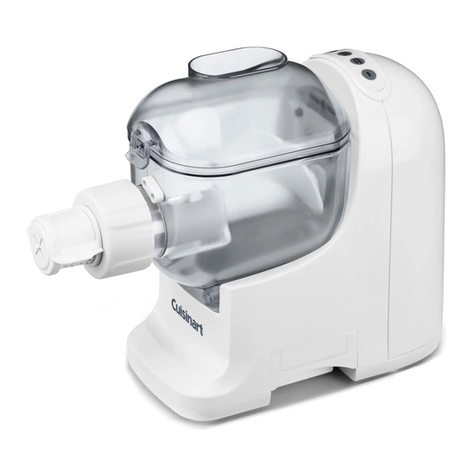
Cuisinart
Cuisinart Pastafecto PM-1 Series INSTRUCTION AND RECIPE BOOKLET
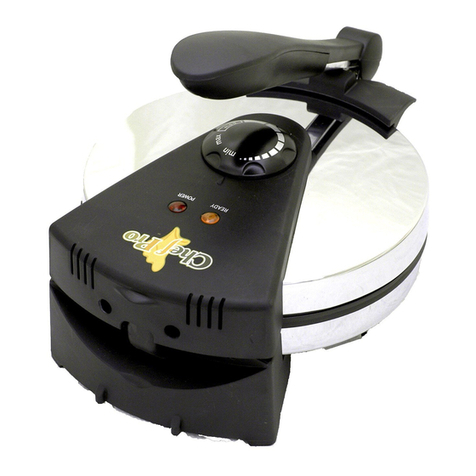
Chef Pro
Chef Pro FBM 108 Owner's manual and recipe book
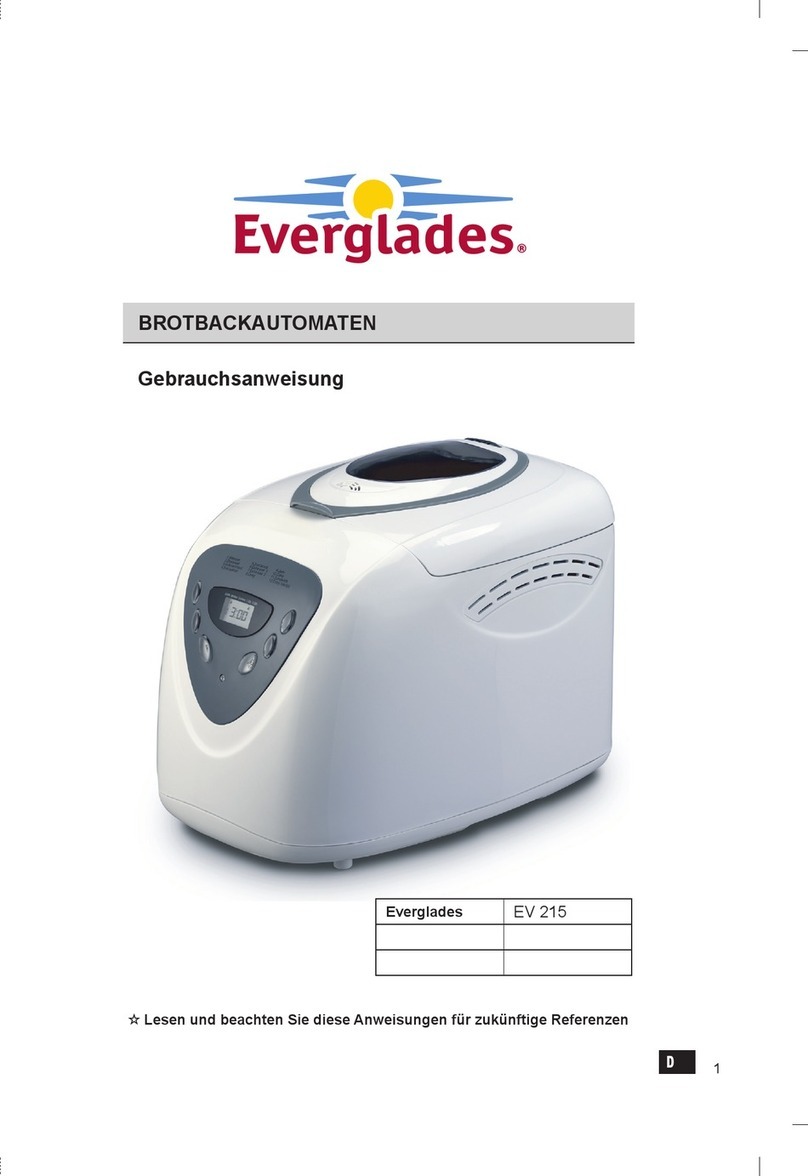
Everglades
Everglades EV 215 instruction manual
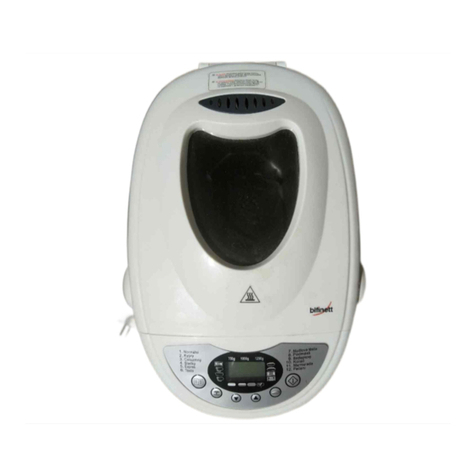
Bifinett
Bifinett KH 1171 operating instructions

Panasonic
Panasonic Bread Bakery SD-250 Operating instructions and recipes
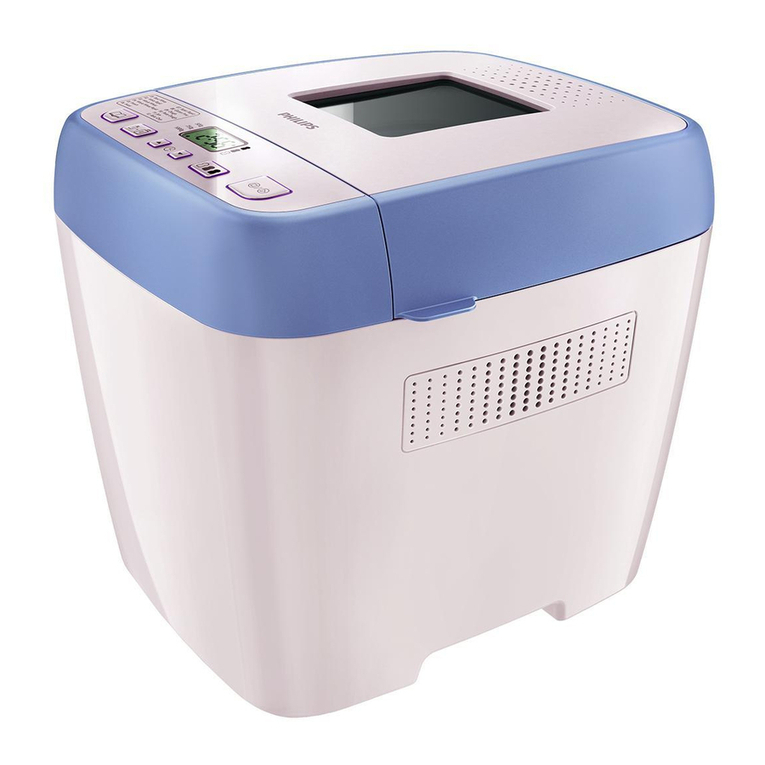
Philips
Philips HD9020 user manual
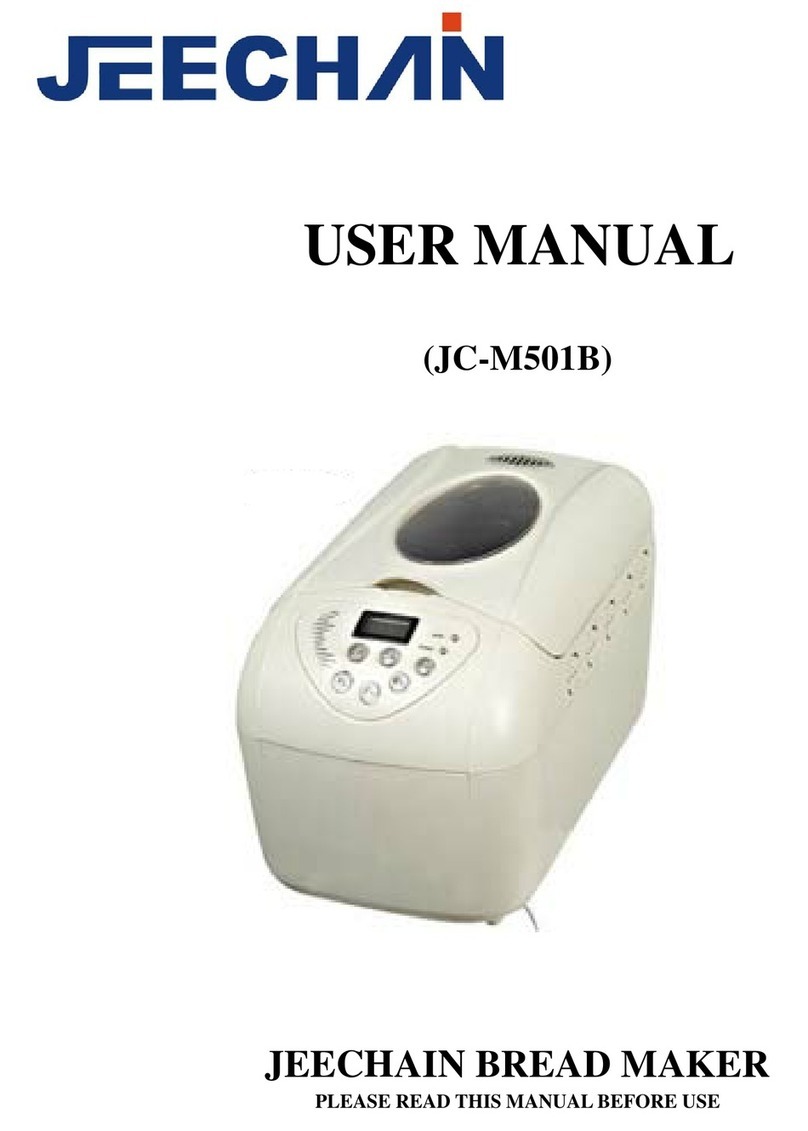
Jeechain
Jeechain JC-M501B user manual
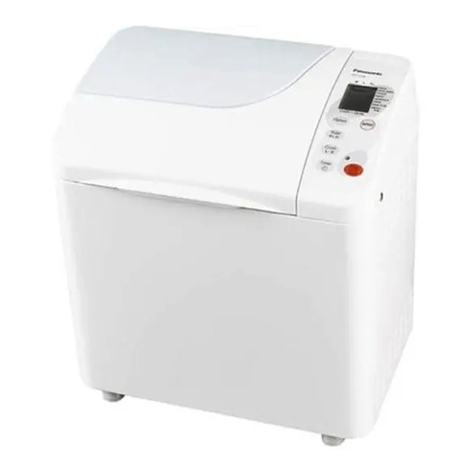
Panasonic
Panasonic Bread Bakery SD-253 Operating instructions & recipes

Gastroback
Gastroback 42822 instruction manual
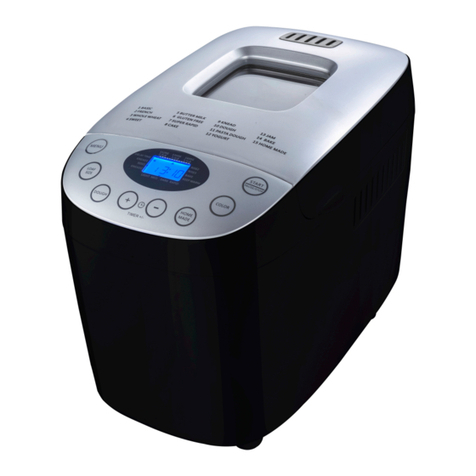
Paula Deen
Paula Deen BM8901 instruction manual
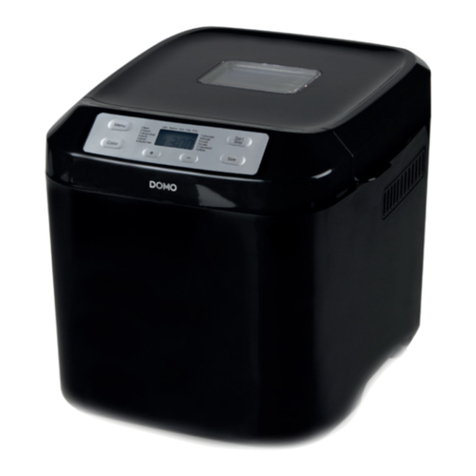
Linea 2000
Linea 2000 DOMO B3974 Instruction booklet
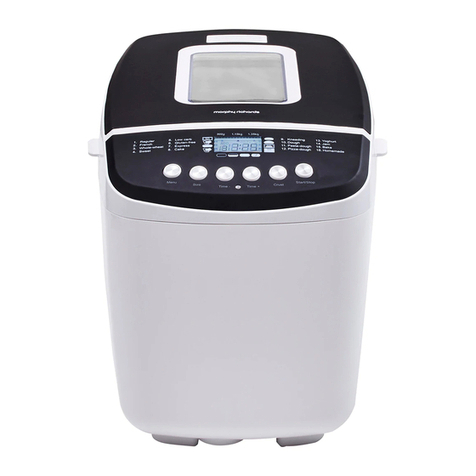
Morphy Richards
Morphy Richards MRBRD3 instruction manual

